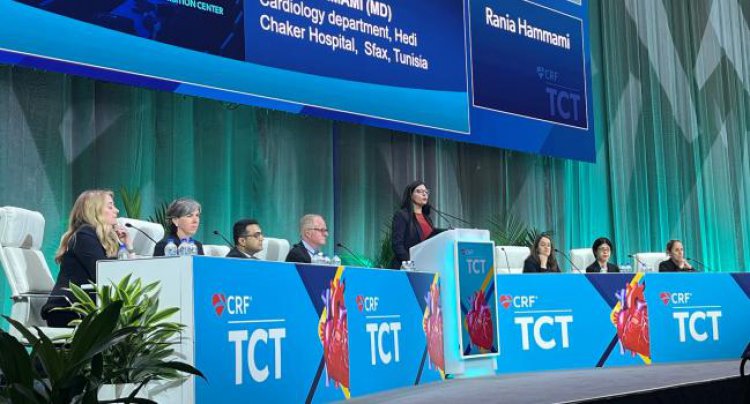
BOSTON, MA—For patients undergoing transradial coronary procedures, a short course of rivaroxaban (Xarelto; Bayer/Janssen) reduces the rate of radial artery occlusion without significantly increasing bleeding, the RIVARAD study shows.
At 30 days, ultrasound revealed occlusion in 6.9% of patients who were treated with rivaroxaban 10 mg for 7 days after their procedures and 13.0% of those who were not (OR 0.50; 95% CI 0.27-0.91), Rania Hammami, MD (Hedi Chaker Hospital, Sfax, Tunisia), reported here at TCT 2022.
Though BARC-defined hemorrhagic events were numerically higher in the rivaroxaban group, the difference didn’t reach statistical significance (2.7% vs 1.9%; OR 1.4; 95% CI 0.4-4.5).
Hammami said the incidence of radial artery occlusion is particularly high in Tunisia, adding that she has started using rivaroxaban after transradial procedures to treat patients who are at high risk. That includes women, current smokers, and those who have undergone previous transradial procedures. Hammami noted that based on this study, women who smoke and have a history of transradial procedures have a 50% chance of developing an occlusion in their radial artery after a subsequent procedure performed through the wrist.
“I think that our study will change practice, especially in patients who are at high risk of radial artery occlusion,” she told TCTMD